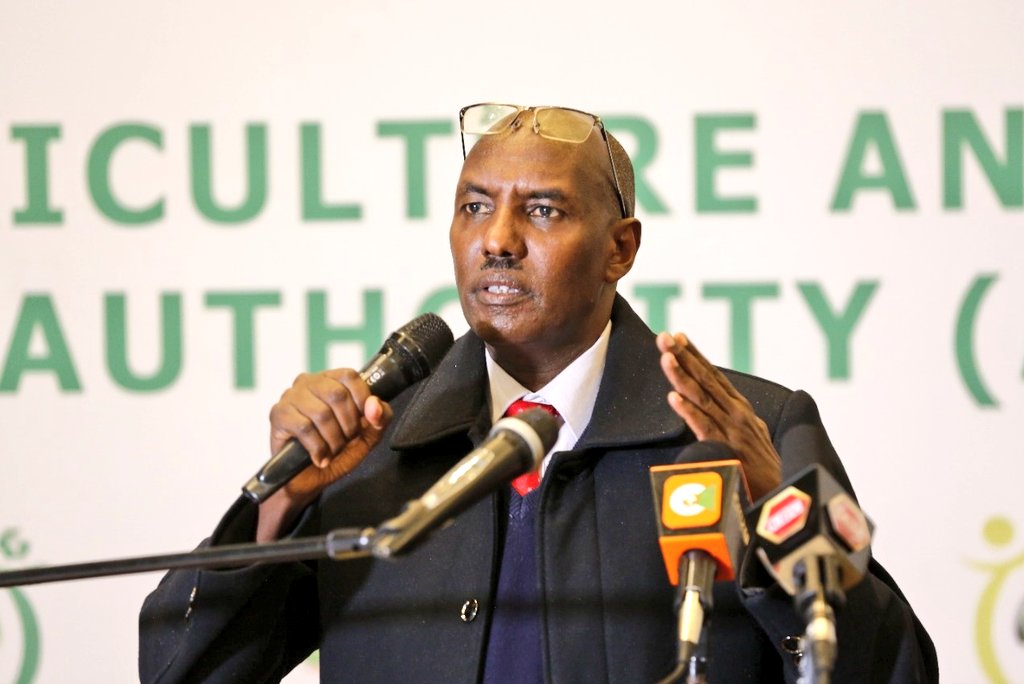Agriculture
Maize Flour Blending Policy now Awaits Cabinet Nod

The finalised regulations for the Food, Drugs and Chemical Substances Act of 2012, which calls for maize flour to be blended with millet and cassava to improve nutrition, are currently awaiting Cabinet approval.
Agriculture PS Kello Harsama stated that the state is currently considering introducing the blending policy after the ministry finished discussing the frameworks with stakeholders.
If all goes as planned, the policy should go into effect once the long rains’ harvest has begun to reach the market.
“We are anticipating a good harvest from October and once we have maize and prices have stabilised, then we can start talks on the implementation of flour blending. Our main concern right now is to get maize to avert the looming shortage in the country,” he said.
He delivered a speech in Nairobi as part of a prelude to the India-Africa International Millet Conference, which would take place at the KICC in Nairobi the following month.
In order to increase the nutritional content of maize flour, the Food, Drugs and Chemical Substances Act of 2012 requires millers to combine it with other high-value crops.
For instance, millers can combine white maize flour with millet, cassava, and sorghum to ensure good nutrition for Kenyans, according to Harsama. The regulations, according to him, are pending Cabinet approval.
According to the PS, a flour blending program will be implemented that will involve mixing maize flour with millet, sorghum, or cassava.
The initiative aims to ease the strain on the demand for maize, since the nation consistently faces a shortage that is filled by importing maize from its neighbors.
Millers had expressed concern that blending might modify the flavor and appearance of ugali, but the PS informed them that blending has no impact on ugali’s flavor and instead improves it nutritionally.
The initiative to combine maize flour also aims to broaden dietary options, enhance micronutrient intake, and develop a market for the crops utilised in the process.
The Kenya Demographic Health Survey indicates, 26% of children under the age of five are stunted, 11% are underweight, and 4% are wasting.
According to Harsama, the government is attempting to increase the output of the crop as the International Year of Millet is observed.
On March 5, 2021, the United Nations General Assembly approved India’s proposal to designate 2023 as the International Year of Millets, which received support from 72 nations, including Kenya.
Kenya only produces a third of the millet it needs; the rest must be imported.
“For example, in 2022 the total production was 63,063 tonnes on 106,233 hectares against the potential of 200,000 tonnes by using improved varieties against national demand of 138,000 tonnes per year,” Harsama said.
“Our focus on millets is because it is nutritious and good for people with health challenges such as diabetes,” he said.
“We are also facing a challenge of climate change and millet can withstand very little rain.”
As stated by Harsama, drought-tolerant plants including sorghum, millet, sweet potatoes, cassava, and green grammes are essential for guaranteeing food security in rural households.
To achieve food and nutrition security, he suggested that farmers employ contemporary technologies in the food production process.
According to the PS, millet has long been neglected, with little funding for research and development and little enthusiasm from seed firms for propagating the seeds.
He emphasised that encouraging the production and use of millet continues to be difficult due to the lack of high-quality millet seeds available.
“A vast majority of farmers still rely on the informal seed system and often continue to recycle seeds that have declined in quality through generations of cultivation leading to low productivity. Over time, however, the attitude towards millet is rapidly changing with the realisation that they have enormous potential in ensuring food security and wellbeing,” Harsama said.
Through the provision of seed, seedlings, or cuttings as well as the holding of demonstrations and field days, the Ministry of Agriculture has in the past encouraged the development of traditional high-value crops such as millet, sorghum, cassava, and sweet potato.
In order to address the lack of high-quality tolerant seeds, the ministry launched the Traditional High-Value Crops programme in 2006.







